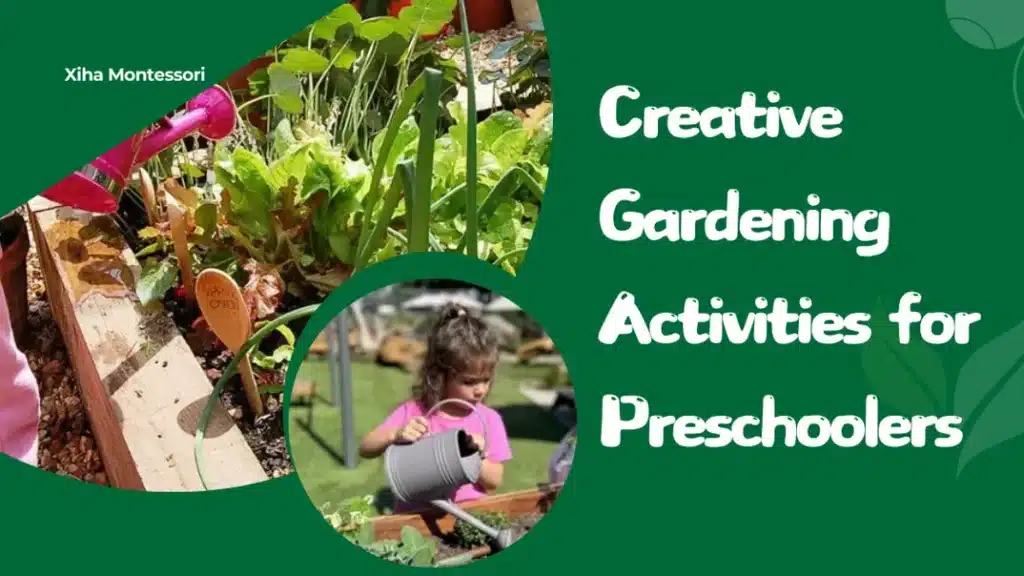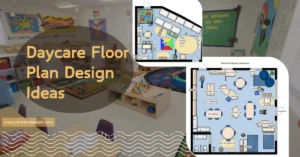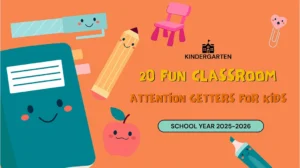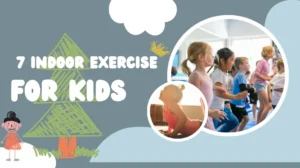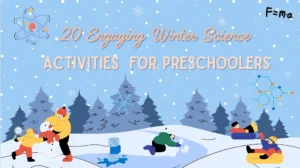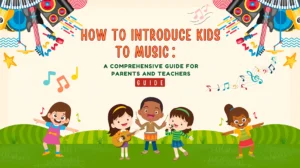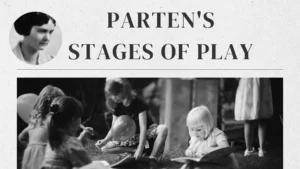Gardening activities for preschoolers are a magical experience for little ones. It teaches patience, responsibility, and a love of nature. But how do we make gardening activities appealing to preschoolers?
Gardening activities for preschoolers foster a deep appreciation for the environment and teach important skills such as patience, responsibility, and problem-solving. Not only are these activities educational, but they are also great fun and allow children to connect with nature meaningfully.
Whether you have an expansive backyard or a small balcony, these activities can be adapted to any space, making it easy for your preschooler to engage in gardening. From growing their vegetables to designing a sensory garden, these activities are perfect for hands-on learning while fostering a love of the great outdoors. So roll up your sleeves, grab some gardening tools, and get planting and exploring!
Benefits of Gardening Activities for Preschoolers?
Enhances Fine Motor Skills
Gardening activities like planting seeds and watering plants help enhance fine motor skills. Handling small seeds, using tools, and carefully watering plants require precision and control, which develop these essential skills.
Cognitive Development
Gardening fosters cognitive development as children learn about plant biology, seasons, and ecosystems. Understanding how plants grow, the importance of water and sunlight, and the cycle of life in the garden stimulates their curiosity and knowledge.
Emotional Benefits
Gardening can be therapeutic for children. It helps reduce stress and promotes a sense of calm and well-being. Caring for plants can also boost their self-esteem and confidence, providing a sense of accomplishment.

Social Skills
Working together on gardening projects teaches children teamwork, communication, and cooperation. It also provides opportunities for social interaction in a shared environment, helping them build relationships and social skills.
Physical Health
Gardening encourages physical activity. Tasks like digging, planting, and weeding involve movement, which can improve physical fitness and coordination in young children. It also encourages them to spend time outdoors, benefiting their overall health.
Environmental Awareness
Gardening teaches children about the environment and the importance of taking care of it. They learn about recycling through composting, the role of insects in the ecosystem, and the benefits of growing their food.
Creativity and Imagination
Activities like creating fairy gardens, painting pots, and making garden crafts stimulate creativity and imagination. Children can express themselves through these activities, making gardening a fun and artistic experience.
Responsibility and Patience
Gardening teaches children responsibility and patience. They learn that plants need regular care and attention to grow. Waiting for seeds to sprout and plants to mature teaches them the value of patience and perseverance.
How to Create a Garden with Preschoolers?
Creating a garden with preschoolers can be a fun and educational experience that teaches them about the natural world while developing their sensory and motor skills. Here’s a step-by-step guide to get you started:

1. Choosing the Right Place
Choosing the right place for a garden, especially when involving preschoolers, is crucial for both the garden’s success and the children’s safety and enjoyment. Here are some key factors to consider when selecting the perfect spot:
- Assessing Sunlight: Start by assessing how much sunlight the area receives. Most plants need at least 6 hours of sunlight daily.
- Considering Safety: Ensure the garden area is safe and free from hazardous materials. Avoid places with sharp objects, toxic plants, or dangerous tools.
- Accessibility: Paths should be clear and wide enough for children to navigate comfortably.
- Soil Quality: Check the soil quality in your chosen garden area. Healthy soil is rich in nutrients and has good drainage.
2. Planning the Garden
Start by planning the garden together. Discuss what types of plants to grow, where, and what tools and materials are needed. Involve children in decision-making to make them feel invested in the project.
3. Choosing the Right Plants
Choose plants that are easy to grow and maintain. Herbs, flowers, and vegetables like radishes, lettuce, and sunflowers are great preschooler options. These plants proliferate and are relatively easy to care for, providing quick results to keep children engaged.
4. Gather Tools and Supplies
Choose kid-friendly gardening tools that are lightweight and easy for small hands to handle. Tools like shovels, small rakes, and spray cans are perfect for young gardeners.
Provide kids with gloves and protective gear. Gardening gloves protect their hands from dirt and potential injury. Sun hats and sunscreen are also important to protect them from the sun.
Make sure you have enough soil and fertilizer. Good quality soil provides essential nutrients for plant growth. Organic fertilizers are a safe choice for small children because they do not contain harmful chemicals.
Small sprinklers are perfect for preschoolers. If using a hose, ensure it has a gentle nozzle to avoid damaging delicate plants.
5. Involve Children in Planning and Preparing the Garden
Involving children in planning a garden can foster a sense of responsibility and pride. Discuss what types of plants they want to grow. Let them choose from various seeds and plants, explaining the care each will require. This decision-making process makes them feel more invested in the project.
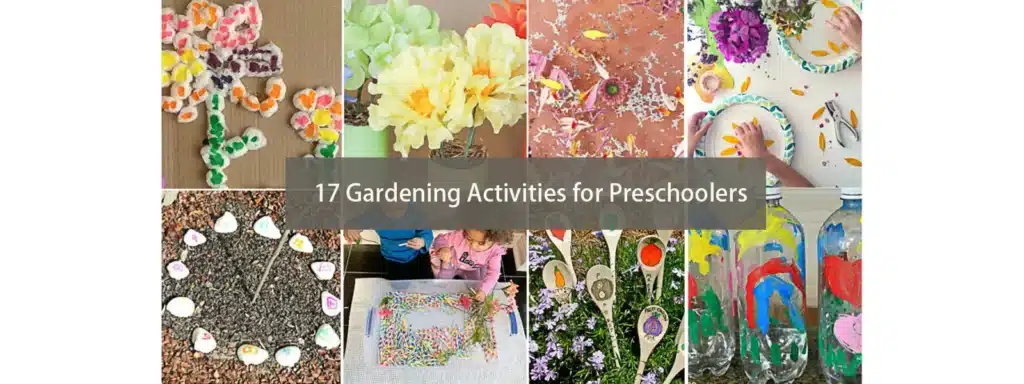
17 Gardening Activities for Preschoolers
Gardening with preschoolers can be a delightful way to explore nature while fostering creativity and curiosity. Here are 17 creative gardening activities that are perfect for young children:
1. Planting Seeds
Planting seeds is a fundamental gardening activity that introduces preschoolers to the life cycle of plants. Choose fast-growing seeds like beans or sunflowers to keep their interest alive. Provide each child with a small pot, soil, and seeds. Explain the process step-by-step, demonstrating how to plant the seeds, water them, and place them in sunlight.
This activity teaches kids about growth, nurturing, and patience as they watch their seeds sprout and grow. Encourage them to observe daily changes and keep a simple growth journal with drawings or photos.
2. Creating a Fairy Garden
A fairy garden is a miniature garden created in a pot or a small garden section. It sparks creativity and imagination as children design and build their magical fairy world. Provide small plants, pebbles, fairy figurines, and miniature furniture.
3. Building a Bug Hotel
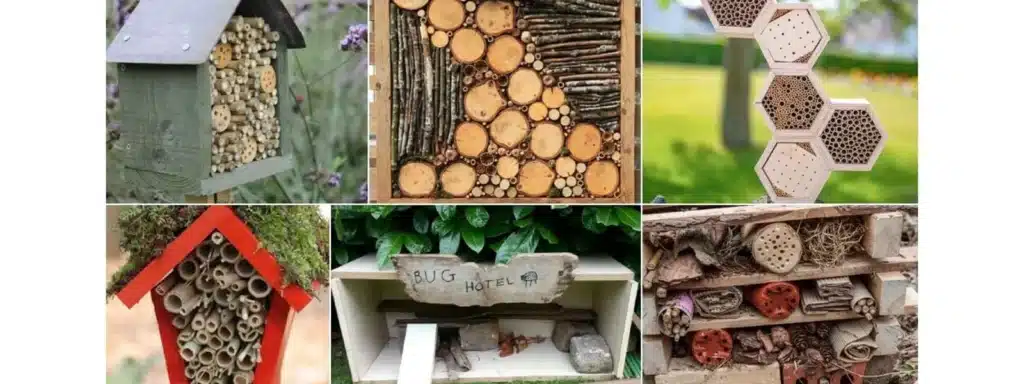
Building a bug hotel is an exciting way for preschoolers to learn about insects and their habitats. Use natural materials like sticks, leaves, pinecones, and hollow stems to create a cozy home for beneficial insects. Explain the importance of bugs in the garden ecosystem.
Encourage the children to observe the bug hotel regularly, documenting any insects they see. This activity promotes biodiversity awareness and an understanding of the interdependence of plants and insects.
4. Painting Pots
Let the children personalize their gardening pots by painting them. Use non-toxic paints and let their creativity flow. This activity allows kids to express themselves artistically while preparing their pots for planting.
5. Herb Garden
Creating an herb garden is a sensory-rich activity. Choose herbs like mint, basil, rosemary, and thyme, which have distinct scents and textures. Plant the herbs in a garden bed or pots, and encourage the children to touch and smell the plants regularly.
6. Nature Scavenger Hunt

Organize a nature scavenger hunt in the garden. Create a list of items for the children to find, such as different types of leaves, flowers, rocks, or insects. This activity encourages exploration and observation skills.
As they find each item, discuss its role in the garden ecosystem. This activity helps preschoolers develop a keen eye for detail and better understand the natural world around them.
7. Bird Feeders
Making bird feeders is a fun way to attract birds to the garden. Use simple materials like pinecones, peanut butter, and birdseed. Let the children smear peanut butter on the pinecones and roll them in birdseed.
8. Sunflower House
Create a living playhouse by planting sunflowers in a circle or square. As the sunflowers grow, they form a natural enclosure. Preschoolers will love having their own sunflower house to play in and observe.
9. Watering Plants

Giving preschoolers small watering cans allows them to help care for the plants. It also teaches them about the importance of water in plant growth.
10. Building a Scarecrow
Building a small scarecrow can be a fun group activity. Children can stuff old clothes with straw and decorate them. This can also be an opportunity to discuss how scarecrows help protect gardens.
11. Growing a Themed Garden
Choose a theme, such as a butterfly or vegetable garden, and grow plants that fit the theme. This can teach children about different types of plants and their roles in the ecosystem.
12. Composting
Teach children about composting by creating a small compost bin. Show them how kitchen scraps and garden waste can be turned into nutrient-rich soil.
13. Dissect a Flower
Dissecting a flower is a fantastic way for preschoolers to learn about plant anatomy. Choose a simple flower like a lily or a daisy and provide magnifying glasses, tweezers, and a worksheet with the parts of a flower labeled. Guide the children in carefully taking apart the flower and identifying each part, such as the petals, stamens, pistils, and sepals.
14. Plant Pumpkin Seeds in a Pumpkin

Planting pumpkin seeds in a pumpkin is a fun and seasonal activity that teaches children about seed germination and plant growth. Start by cutting the top off a small pumpkin and scooping out the seeds and pulp. Clean and dry the seeds, fill the pumpkin with soil and plant a few seeds inside.
This unique planting method recycles the pumpkin and provides a visual and hands-on learning experience. Children can observe the transformation from seed to seedling as the seeds sprout and grow. They will be fascinated by seeing the plants emerge from the pumpkin, making the gardening process magical and memorable.
15. Growing Beans on a Cotton Ball
Growing beans on a cotton ball is an easy and quick activity demonstrating seed germination. Provide each child with a clear plastic cup, cotton balls, and bean seeds. Show them how to moisten the cotton balls and place them in the cup, then tuck the bean seeds between the cotton and the cup’s wall.
16. Sprouting Sweet Potatoes
Sprouting sweet potatoes is a fascinating activity that illustrates vegetative propagation. Provide each child with a sweet potato, a jar of water, and toothpicks. Show them how to insert the toothpicks around the middle of the sweet potato and suspend it over the jar with the bottom half submerged in water.
Over time, the sweet potato will sprout vines and roots, providing a clear view of plant growth. This activity teaches children about alternative methods of growing plants and the importance of water in plant development. It’s a wonderful way to engage children in the wonders of nature right in their own homes or classrooms.
17. Growing Beans on a Cotton Ball
As mentioned before, growing beans on a cotton ball is a highly effective way to demonstrate seed germination. This repetitive activity reinforces the learning process and allows children to experiment with different types of beans, comparing their growth rates and patterns.
Do’s and Don’ts of Gardening Activities for Preschoolers
Do’s
- Do Supervise: Always supervise young children during gardening activities to ensure their safety.
- Do Use Child-Friendly Tools: Provide appropriate tools for their age and size.
- Teach Respect for Nature: Encourage children to treat plants and insects carefully.
- Do Make It Fun: Keep activities engaging and fun to maintain their interest.
- Do Involve Them in All Steps: Include children in all gardening steps, from planning to harvesting.
Don’ts
- Don’t Use Harmful Chemicals: Avoid using pesticides or chemicals that can harm children.
- Don’t Overwhelm Them: Keep activities simple and age-appropriate to avoid overwhelming them.
- Don’t Expect Perfection: Understand that mistakes will happen and use them as learning opportunities.
- Don’t Ignore Their Input: Listen to their ideas and preferences to make them feel valued and involved.
- Don’t Forget Safety: Ensure all tools and materials are safe for children.
How to Incorporate Gardening Activities into the Curriculum?
Integrating gardening into the preschool curriculum is simpler than you might think. Start by aligning gardening activities with educational goals such as science, math, and literacy. Use gardening to teach children about plant life cycles, measurement, and vocabulary.
Gardening can be woven into various subjects. For example, measure plant growth for math, write literacy garden journals and observe insects for science. Doing so creates a multidisciplinary learning experience that keeps children engaged and curious.

Can I do gardening indoors?
Absolutely! Indoor gardening is a great alternative, especially in areas with limited outdoor space or harsh weather. Use containers, windowsill gardens, and grow lights to create an indoor garden environment. Choose plants that thrive indoors, such as herbs, succulents, and certain vegetables.
Indoor gardening offers a controlled environment, making teaching children about plant care easier without the unpredictability of outdoor weather. It also allows gardening activities to continue year-round, providing continuous learning opportunities.
How to Keep Preschoolers Safe in the Garden?
Keeping preschoolers safe in the garden requires careful planning and supervision. Here are some practical tips to ensure a safe and enjoyable gardening experience for young children:
- Choose Safe Plants: Avoid planting toxic plants that could be harmful if ingested or cause allergic reactions. Common garden plants like foxglove, oleander, and some types of lilies can be toxic. Opt for child-friendly plants instead.
- Use Appropriate Tools: Provide children with tools that are the right size for their hands and not too sharp. Child-sized gardening gloves, trowels, and watering cans can make gardening safer and more fun.
- Supervise Closely: Always supervise preschoolers closely when they are in the garden. This helps prevent accidents and ensures children do not put plants or non-food items in their mouths.
- Secure Garden Boundaries: Ensure the gardening area is enclosed or has boundaries preventing children from wandering off. This can be as simple as a fence or a clear set of rules about where they can and cannot go.
- Check for Hazardous Objects: Before letting children into the garden, check for hazards such as sharp tools, chemicals, or dangerous debris. Remove these items from the area to prevent accidents.
- Teach Safe Practices: Teach children basic safety rules like not running with tools, how to carry tools properly, and the importance of washing hands after gardening.
- Sun Protection: Protect children from overexposure to the sun by scheduling gardening activities in the morning or late afternoon. Encourage the use of sun hats, sunscreen, and long-sleeved shirts.
- Stay Hydrated: Provide plenty of water and remind children to take breaks and hydrate, especially on warm days.
- Use Safe Pest Control: Opt for natural pest control methods instead of chemical pesticides, which can harm children. Encourage practices like companion planting and the use of beneficial insects.
- Create Clear Pathways: Ensure paths are clear and flat to prevent tripping. Avoid using slippery materials like loose gravel or slick wood surfaces in pathways.
- Educate About Nature: Teach children about insects and other critters they might encounter, explaining which are safe and which to avoid, like bees or spiders, in a way that fosters respect rather than fear.

Conclusion
Gardening with preschoolers is not just about growing plants; it’s about growing minds, skills, and connections. These activities can make gardening an exciting and educational experience for young children, fostering a lifelong appreciation for nature.
If you want to know more about kindergartens or need to purchase products for your kindergarten, you can contact Xiha Montessori.
We are a manufacturer and supplier of kindergartens with 20 years of experience in education, having assisted more than 2,000 kindergartens worldwide, offering a one-stop service from consultation to product delivery!
By incorporating these creative gardening activities, we can create enriching and memorable experiences for preschoolers, nurturing their development and love for the natural world.

